In the sports community, drugs of this group are popular because the properties inherent in anabolic steroids allow for more significant athletic results.
Goal of the Review: To provide an understanding of the use of AAS in the sports industry, the mechanisms of action of these drugs on the body, and the potential short-term and long-term side effects that may occur.
This material also describes the history of anabolic steroids, their role in the success of Olympic athletes from the USSR and GDR. Usage schemes are provided, and other issues related to this topic are discussed.
Androgenic Anabolic Steroids
This review turned out to be quite extensive, but it is only a small part of what you need to know or should know for those planning to take AAS. To begin with, I would like to write a few words from myself as a small disclaimer.
The use of AAS is a serious intervention in the body that requires careful consideration, prudence, and some knowledge and experience. In a sense, it is biohacking. That is when we make some adjustments to the algorithm of the body systems' work.
In general, the unwanted consequences associated with the use of AAS are a normal physiological function of the body, which, in scientific terms, always strives to maintain internal homeostasis, i.e., balance.
In essence, these are not side effects but the effect of AAS itself, as anabolic steroids do not have properties that allow them to act selectively only on skeletal muscle tissue.
Yes, we just want to "build muscle" with the help of AAS, which, in turn, are an artificial analogue of testosterone, but there is a nuance – testosterone acts not only on muscles.
Receptors that can directly interact to some extent with the active substance of steroid drugs are expressed in many tissues of the body, with the exception of, for example, spleen tissues.
That is, anabolic steroids can affect not only qualitative or quantitative changes in skeletal muscles.
To some extent, they can also influence the functioning of certain organs and, of course, affect the levels of other hormones and biologically active substances, which, in turn, also influence the processes occurring in various tissues.
It is worth saying that this is inevitable, as a living organism is a complex system where everything is interconnected. As a result, phenomena that we are used to calling side effects can occur.
The extent to which these effects are expressed, if at all, can depend on several factors, such as individual characteristics, contraindications, dosing method, drug combinations, duration of use, and others.
However, one of the most important components of the AAS strategy is a measure or set of measures that allow minimizing the impact on non-target tissues and organs.
Thus, the so-called side effects and unwanted consequences are most often the result of inadequate use of AAS and/or a banal lack of information and experience in correcting the internal balance against the background of external intervention.
Due to the aforementioned individual characteristics, this ignorance can have different consequences. For some, it is critical, for others not so much, and for some very critical.
Therefore, to avoid health problems, it is recommended to approach the issue responsibly. Rational use of AAS implies the presence of a whole strategy and a set of measures.
Attention! This review is for informational purposes only, does not constitute a guide to action, and does not replace medical advice.
Introduction
Since their first appearance on the sports scene in the 1950s1,2, anabolic androgenic steroids (AAS) have often become central drugs for enhancing athletic performance in various disciplines and remain one of the most controversial topics in sports today.
AAS are synthetic derivatives of the male sex hormone testosterone and have both anabolic and androgenic effects on the body.
In short, the anabolic properties of these drugs lie in accelerating and intensifying metabolic processes, while the androgenic properties are responsible for the development of male sexual characteristics.
Obviously, the androgenic effects are undesirable for women and adolescents. Many attempts have been made to synthesize a steroid with only anabolic effects, but this has not yet been achieved.3,4
The anabolic effects of AAS make them in demand among athletes, as they allow expanding the potential and capabilities of the body, including by increasing strength indicators and muscle mass.
Sometimes the use of AAS can lead to the manifestation of adverse side effects, some of which depend on the dose and individual factors.
History
In the early 1950s, rumors began to circulate that the Soviet Union was conducting pharmacological experiments among its athletes.3
At the 1952 Helsinki Olympic Games, Soviet athletes demonstrated great success, and the subsequent three decades were accompanied by an active struggle for dominance in the Olympic medal table.
Olympic Success
At the 1956 World Games in Moscow, Dr. Ziegler, an American physician, witnessed the use of AAS by Soviet athletes. In this case, it was pure testosterone
The former German Democratic Republic (GDR) used elite sports as a political tool to achieve international prestige and improve diplomatic positions. It is worth noting that German athletes managed to succeed on the world sports stage.
The GDR, along with the USA and the Soviet Union, ranked third in 1972 and second in 1976, 1980, and 1988.
According to Manfred Höppner, deputy director and chief physician of the GDR doping system, almost all athletes who won medals in speed or strength competitions at the 1972 Munich Olympics took Oral Turinabol
After reunification and the abandonment of the doping system, the results of German athletes significantly decreased, and it is now recognized that the success of the GDR was largely due to a government-sanctioned pharmacology program.
Only at the 1976 Montreal Olympics was the first suitable urine doping test developed, which allowed for the banning of certain groups of pharmaceutical products.2
This ban, combined with progress in doping testing, led to the disqualification of eleven athletes, eight of whom were disqualified for using AAS.1
Despite the introduction of doping control, the use of AAS continues to take place in elite sports and beyond.
For a long time, a method was used that allowed athletes to bypass the urine doping test. After blood doping tests appeared, the use of various pharmaceuticals to improve sports performance became more complex.
What are Steroids?
The term "steroid" is often misunderstood, especially in modern society. For many, the word "steroid" refers to drugs that athletes use or even abuse to enhance their performance, which is likely due to the prevalence of AAS.
Steroid is a chemical substance characterized by high biological activity and has a structure consisting of several rings of bonded atoms.
Along with testosterone, vitamin D, cholesterol, and estrogen are also classified as steroids that are naturally synthesized by the body.6
Thanks to pharmaceutical industry technologies, synthetic analogs of some forms of steroids have been produced and are used in medicine worldwide.
Among them, there are two main types - corticosteroids and androgenic anabolic steroids, which should not be confused.
Corticosteroids
Corticosteroids are synthetic versions of hormones that are anti-inflammatory agents and are naturally produced by the adrenal glands.
They are used to treat diseases such as asthma and arthritis and do not have the ability to build muscle mass.8
Mechanism of Action of Anabolic Steroids
AAS are synthetic derivatives of the male sex hormone testosterone1 and have limited medical use.
They are mainly used to treat anemia, muscle dystrophy, and can also be used in the framework of hormone replacement therapy, usually for elderly men who have lost or partially lost the ability to produce their own testosterone.
In these cases, AAS are prescribed in a physiological dose (about 50-75 mg per week).9 The principle of AAS action is the same for all steroids at the cellular level. Since AAS are fat-soluble, they can diffuse through the cell membrane into the cell's cytoplasm.7
AAS bind to the steroid receptor and are transported to the cell nucleus, where they bind to DNA and promote the transcription of messenger RNA (mRNA). This leads to increased protein synthesis, the effects of which depend on the type of cells associated with AAS.
When an athlete trains intensively, the body produces the hormone glucocorticoid, which reduces inflammation but is also catabolic, meaning it breaks down muscle tissue.
It is believed that taking doses exceeding physiological ones, AAS affect hormone levels in the body not only by increasing testosterone levels but also by reducing glucocorticoid levels. This, in turn, leads to accelerated muscle recovery and allows muscles to become bigger and stronger.9
Types and Forms of Anabolic Steroids
As mentioned above, AAS are synthetic derivatives of the male sex hormone testosterone and are classified based on their route of administration: orally or by injection.
It should be noted here that injectable AAS are always administered intramuscularly and never intravenously, as intravenous administration, along with significant fluctuations in AAS levels in the blood, can also lead to the development of oil embolism.
The most effective route of administration of AAS is determined primarily by the way the testosterone molecule is modified.
With oral administration, unmodified testosterone molecules are quickly broken down by the liver in a process known as first-pass metabolism.
Modification of the testosterone molecule at the 17-α position, usually with the addition of a methyl or ethyl group, makes the molecule more resistant to this process and allows maintaining an effective concentration of the active substance in the blood.
Oral AAS are the starting point for many beginner users and are popular due to their ease of use.
Frequent and prolonged use, that is, abuse of oral AAS, alkylated at the 17-alpha position, can lead to the development of hepatotoxic reactions.
Therefore, oral, that is, tablet forms of androgenic anabolic steroids are often used in cycles.12, 14 This aspect will be discussed in more detail below.
After several months of taking oral anabolic steroids, many users switch to injectable AAS. These drugs are modified at the 17-β position, with the most common modification being the addition of an ester side chain.
Injectable AAS do not have a modification at the 17-alpha position, they are ineffective when taken orally as the active substance will break down in the liver.12
When administered intramuscularly, the active substance of injectable AAS most often demonstrates greater stability. Due to this, the active substance has a longer half-life, starts to act more slowly but more effectively compared to oral forms.3
Injectable steroids can be presented in the form of an oil solution, such as testosterone enanthate, or in the form of a water suspension, like stanozolol.
List of Androgenic Anabolic Steroids
The table below lists the most popular and most commonly used oral and injectable AAS in sports practice.
| Oral Steroids | Injectable Steroids |
|---|---|
| Methandrostenolone (Dianabol®) 1 | Boldenone undecylenate (Equipoise®) |
| Oxandrolone (Anavar®) 1 | Nandrolone decanoate (Deca-Durabolin®) |
| Oxymetholone (Anadrol®) 1 | Sustanon |
| Testosterone undecanoate (Andriol) | Testosterone enanthate |
| Methenolone acetate (Primobolan®) 1 | Testosterone cypionate (Testex Leo®) |
| Stanozolol (Winstrol®) 1 | Stanozolol (Winstrol Depot®) |
1 17-α-Alkylated
Table 1. List of the most commonly used oral and injectable AAS. The drugs are listed as: active substance (brand name)
Half-life Period
Oral steroids act on the body much faster than their injectable counterparts, but their duration of action is much shorter due to the short half-life (t half-life) of the active substance, so the drug must be taken more often.17−19
The half-life is defined as the period of time during which the level of the active substance in the blood decreases to half of its original concentration.12
The short half-life of oral steroids means that the detection time of the steroid is relatively short. Conversely, injectable steroids have a much longer half-life than oral steroids.
This makes injectable steroids more stable in terms of maintaining the concentration of the active substance, but it also means that the detection time in the blood is much longer.3
Tables 2 and 3 show the time indicators for the half-life and detection of the active substance of oral and injectable androgenic anabolic steroids.17
| Oral Steroids | ||
|---|---|---|
| drug | t half-life | t detection |
| Methandrostenolone | 8 hours | 6 weeks |
| Oxandrolone | 12 hours | 3 weeks |
| Oxymetholone | 16 hours | 8 weeks |
| Testosterone undecanoate | 12 hours | 5 weeks |
| Methenolone acetate | 6 hours | 5 weeks |
| Stanozolol | 8 hours | 3 weeks |
In the sports community, these drugs are popular because the properties inherent in anabolic steroids allow for achieving more significant athletic results.
Purpose of the review: to provide an understanding of the use of AAS in the sports industry, the mechanisms of action of these drugs on the body, as well as the potential short-term and long-term side effects that may occur.
This material also describes the history of anabolic steroid use, their role in the success of Soviet and GDR Olympic athletes. Application schemes are provided, and other issues related to this topic are discussed.
Androgenic Anabolic Steroids
This review is quite extensive, but it is only a small part of what should be known or needs to be learned by those planning to use AAS. First, I would like to say a few words as a disclaimer.
The use of AAS is a serious intervention in the body that requires balance, rationality, and some knowledge and experience. In a way, it is biohacking. That is, it is when we make some adjustments to the algorithm of our body's systems.
In general, the adverse effects associated with AAS use are a normal physiological function of the body, which, in scientific terms, always strives to maintain internal homeostasis, that is, balance.
In essence, these are not side effects, but rather the effect of AAS itself, as anabolic steroids do not have properties that allow them to act selectively only on skeletal muscle tissue.
Yes, we simply want to "build muscle" with the help of AAS, which, in turn, are an artificial analogue of testosterone, but there is a nuance — testosterone affects not only the muscles.
Receptors that can directly interact to some extent with the active substance of steroid drugs are expressed in many tissues of the body, except, for example, the tissues of the spleen.
That is, anabolic steroids can affect not only qualitative or quantitative changes in skeletal muscles.
To some extent, they can also affect the functioning of certain organs, and, of course, influence the levels of other hormones and biologically active substances, which, in turn, also affect the processes occurring in various tissues.
It is worth saying that this is inevitable, as a living organism is a complex system where everything is interconnected. As a result, phenomena that we are used to calling side effects may occur.
The severity of these effects, if any, may depend on several factors, such as individual characteristics, contraindications, dosage method, combination of drugs, duration of use, and others.
However, one of the main components of the AAS use strategy is a measure or set of measures that will help to mitigate or minimize the impact on non-target tissues and organs.
Thus, the so-called side effects and adverse consequences are most often the result of inadequate use of AAS and/or a simple lack of information and experience in adjusting the internal balance in response to external intervention.
Due to the aforementioned individual characteristics, this lack of knowledge can have different consequences. For some, it is critical, for others, not very much, and for some, it is very critical.
Therefore, to avoid health problems, it is recommended to approach the issue responsibly. Rational use of AAS implies having a whole strategy and a set of measures.
Attention! This review is for informational purposes only, is not a guide to action, and does not replace medical consultation.
Introduction
Since their first appearance in the sports arena in the 1950s1,2, anabolic androgenic steroids (AAS) have often become the central drug for enhancing the performance of athletes in various disciplines and remain one of the most controversial topics in sports today.
AAS are synthetic derivatives of the male sex hormone testosterone and have both anabolic and androgenic effects on the body.
In short, the anabolic properties of these drugs lie in accelerating and increasing the intensity of metabolic processes, while the androgenic properties are responsible for the development of male sexual characteristics.
Obviously, androgenic effects are undesirable for women and adolescents. Many attempts have been made to synthesize a steroid that has only anabolic effects, but this has not been achieved so far.3,4
The anabolic effects of AAS make them in demand among athletes as they allow expanding the potential and capabilities of the body, including by increasing strength indicators and muscle mass.
Sometimes the use of AAS can lead to adverse side effects, some of which depend on the dose and individual factors.
History
In the early 1950s, rumors appeared that the Soviet Union was conducting pharmacology experiments among its athletes.3
At the 1952 Helsinki Olympics, Soviet athletes showed great success, and the subsequent three decades were accompanied by an active struggle for dominance in the Olympic medal table.
Olympic Success
At the 1956 World Games in Moscow, Dr. Ziegler, an American physician, witnessed the use of AAS by Soviet athletes. In this case, it was pure testosterone.
The former German Democratic Republic (GDR) used top-level sports as a political tool to achieve international prestige and improve diplomatic positions. It should be noted that German athletes succeeded on the world sports stage.
The GDR, along with the USA and the Soviet Union, ranked third in 1972 and second in 1976, 1980, and 1988.
According to Manfred Höppner, Deputy Director and Chief Physician of the GDR doping system, almost all athletes who won medals in speed or strength competitions at the 1972 Munich Olympics were taking Oral-Turinabol.
After reunification and the abolition of the doping system, the results of German athletes significantly declined, and it is now recognized that the GDR's success was largely due to a government-sanctioned pharmacology program.
Only at the 1976 Montreal Olympics was a suitable urine doping test developed, which allowed for the banning of certain groups of pharmaceutical substances.2
This ban, combined with progress in doping testing, led to the disqualification of eleven athletes, eight of whom were disqualified for using AAS.1
Despite the introduction of doping control, the use of AAS continues to occur in top-level sports and beyond.
For a long time, a method was used that allowed athletes to circumvent urine doping tests. After the emergence of blood doping tests, the use of various pharmaceutical substances to improve sports performance became more complex.
What Are Steroids?
The term "steroid" is often misunderstood, especially in modern society. For many, the word "steroid" refers to drugs that athletes use or even abuse to improve their performance, which is probably due to the prevalence of AAS.
Steroid is a chemical substance characterized by high biological activity and has a structure consisting of several rings of connected atoms.
Along with testosterone, vitamin D, cholesterol, and estrogen are also classified as steroids, which are naturally synthesized by the body.6
Thanks to pharmaceutical technology, synthetic analogues of some forms of steroids have been produced, which are used in medicine worldwide.
Among them, there are two main types — corticosteroids and androgenic anabolic steroids, which should not be confused.
Corticosteroids
Corticosteroids are synthetic versions of hormones that are anti-inflammatory agents and are naturally produced by the adrenal glands.
They are used to treat diseases such as asthma and arthritis and do not have the ability to build muscle mass.8
Mechanism of Action of Anabolic Steroids
AAS are synthetic derivatives of the male sex hormone testosterone1 and have limited medical use.
They are mainly used to treat anemia, muscle dystrophy, and can also be used in hormone replacement therapy, usually for elderly men who have lost or partially lost the ability to produce their own testosterone.
In these cases, AAS are prescribed in physiological doses (approximately 50-75 mg per week).9 The principle of AAS action is the same for all steroids at the cellular level. Since AAS are fat-soluble, they can diffuse through the cell membrane into the cell's cytoplasm.7
AAS bind to the steroid receptor and are transported to the cell nucleus, where they bind to DNA and promote the transcription of messenger RNA (mRNA). This leads to an increase in protein synthesis, the effects of which depend on the type of cells with which the AAS are associated.
When an athlete trains intensively, the body produces the hormone glucocorticoid, which reduces inflammation but is also catabolic, meaning it breaks down muscle tissue.
It is believed that when taking doses exceeding physiological ones, AAS affect the level of hormones in the body not only by increasing testosterone levels but also by reducing glucocorticoid levels. This, in turn, leads to accelerated muscle recovery and allows muscles to become bigger and stronger.9
Types and Forms of Anabolic Steroids
As mentioned above, AAS are synthetic derivatives of the male sex hormone testosterone and are classified depending on their route of administration: oral or injectable.
It should be noted here that injectable AAS are always administered intramuscularly and never intravenously, as intravenous administration, along with significant fluctuations in AAS levels in the blood, can also lead to the development of oil embolism.
The most effective route of administration of AAS is determined primarily by the method of modification of the testosterone molecule.
With oral administration, unmodified testosterone molecules are quickly broken down by the liver in a process known as first-pass metabolism.
Modification of the testosterone molecule at the 17-α position, usually by adding a methyl or ethyl group, makes the molecule more resistant to this process and allows maintaining an effective concentration of the active substance in the blood.
Oral AAS are the starting point for many beginning users and are popular due to their ease of use.
Frequent and prolonged use, that is, abuse of oral AAS, alkylated at the 17-alpha position, can lead to hepatotoxic reactions.
Therefore, oral, that is, tablet forms of androgenic anabolic steroids are often used in cycles.12, 14 This aspect will be discussed in more detail below.
After several months of taking oral anabolic steroids, many users switch to injectable AAS. These drugs are modified at the 17-β position, with the most common modification being the addition of an ester side chain.
Injectable AAS do not have a modification at the 17-alpha position, they are ineffective when taken orally because the active substance will break down in the liver.12
When administered intramuscularly, the active substance of injectable AAS, most often, shows greater stability. This means that the active substance has a longer half-life, starts acting more slowly, but more effectively, compared to oral forms.3
Injectable steroids can be presented as an oil solution, such as testosterone enanthate, or as a water suspension like stanozolol.
List of Androgenic Anabolic Steroids
Below is a table listing the most popular and most frequently used oral and injectable AAS in sports practice.
| Oral Steroids | Injectable Steroids |
|---|---|
| Methandrostenolone (Dianabol®) 1 | Boldenone undecylenate (Equipoise®) |
| Oxandrolone (Anavar®) 1 | Nandrolone decanoate (Deca-Durabolin®) |
| Oxymetholone (Anadrol®) 1 | Sustanon |
| Testosterone undecanoate (Andriol) | Testosterone enanthate |
| Methenolone acetate (Primobolan®) 1 | Testosterone cypionate (Testex Leo®) |
| Stanozolol (Winstrol®) 1 | Stanozolol (Winstrol Depot®) |
1 17-α-Alkylated
Table 1. List of the most frequently used oral and injectable AAS. The drugs are listed as: active substance name (brand name)
Half-Life
Oral steroids affect the body much faster than their injectable counterparts, but their duration of action is much shorter due to the short half-life (t half-life) of the active substance, so the drug needs to be taken more often.17−19
The half-life is defined as the period during which the level of the active substance in the blood decreases to half its initial concentration.12
The short half-life of oral steroids means that the detection time of the steroid is relatively short. Conversely, injectable steroids have a much longer half-life than oral steroids.
This makes injectable steroids more stable in terms of maintaining the concentration of the active substance, but also means that their detection time in the blood is much longer.3
Tables 2 and 3 provide the half-life and detection time of the active substance for oral and injectable androgenic anabolic steroids.17
| Oral Steroids | ||
|---|---|---|
| drug | t half-life | t detection |
| Methandrostenolone | 8 hours | 6 weeks |
| Oxandrolone | 12 hours | 3 weeks |
| Oxymetholone | 16 hours | 8 weeks |
| Testosterone undecanoate | 12 hours | 5 weeks |
| Methenolone acetate | 6 hours | 5 weeks |
| Stanozolol | 8 hours | 3 weeks |
Table 2: Half-life and detection time of the active substance in oral androgenic anabolic steroids
| Injectable Steroids | ||
|---|---|---|
| drug | t half-life | t detection |
| Boldenone undecylenate | 15 days | 5 months |
| Nandrolone decanoate | 15 days | 18 months |
| Sustanon | 18 days | 3-4 months |
| Testosterone enanthate | 10.5 days | 3 months |
| Testosterone cypionate | 12 days | 3 months |
| Stanozolol | 24 days | 9 weeks |
Table 3: Half-life and detection time of the active substance in injectable androgenic anabolic steroids
Purposes of AAS Use
What are anabolic steroids used for, or more precisely, what are their purposes? Most often, athletes for whom sports are a profession and a source of income resort to using agents with anabolic effects.
Various drugs that affect physical performance, including anabolic steroids, are also used by amateur athletes for whom sports are more of a hobby, leisure activity, or part of their lifestyle.
The latter category can also include people who want to improve their appearance. In addition, users of these drugs can include representatives of military and security organizations.
For those in the power structures, the level of physical fitness is an important factor that has practical applications in various situations related to their profession.
Legislation and Regulatory Organizations
The existence of the World Anti-Doping Agency (WADA) and its related anti-doping policy serves as a deterrent for many athletes.
The World Anti-Doping Code is a document that harmonizes anti-doping policies across various sports organizations worldwide, including the Olympic movement, and meets international standards to ensure consistency.
International standards include: testing methods, laboratories, therapeutic use exemptions, the prohibited list of substances and methods, and the protection of privacy and personal information.20
World Anti-Doping Agency (WADA)
The World Anti-Doping Agency establishes regulations on the use of certain substances among athletes in some sports organizations worldwide.
Thus, some substances are included in the prohibited list, but it should be noted that this list does not always imply a complete ban, and some substances in this list can be used for therapeutic purposes, for example, in the recovery phase after injuries.
The activities of the anti-doping agency to some extent restrain the use of AAS among professional athletes.
However, despite WADA's restrictions, many athletes during the preparation stage for competitions still use drugs that are banned by this organization. There are also known methods to bypass some doping tests.
The anti-doping code does not apply to amateur athletes and other people who are not associated with sports organizations whose activities are coordinated with WADA.
Ban or Restrictions on AAS Use
Are steroids banned by law? The circulation, that is, the order of distribution and acquisition, as well as the use of androgenic anabolic steroids for personal purposes, is established by the legislation of the specific country.
In some countries, AAS are allowed for personal use, in some countries there are restrictions on certain drugs from the AAS list, and there is also a list of countries where there is a complete ban on the use and/or over-the-counter purchase of drugs from the group of androgenic anabolic steroids.
United States
Legal Status: In the U.S., anabolic steroids are classified as Schedule III controlled substances under the Controlled Substances Act. This means they are illegal to use, buy, or possess without a prescription from a licensed medical practitioner.
Personal use of anabolic steroids without a prescription is prohibited, and possession can lead to legal repercussions. It is also illegal to distribute or sell anabolic steroids without proper authorization.
Penalties: Illegal possession can result in up to one year in prison and a minimum fine of $1,000. Trafficking offenses can lead to five years in prison and fines of $250,000 for first offenses. Repeat offenses carry harsher penalties, including longer prison sentences and higher fines.
United Kingdom
Legal Status: Anabolic steroids are classified as Class C drugs under the Misuse of Drugs Act. It is legal to possess them for personal use but illegal to supply them to others.
Using anabolic steroids for personal purposes is allowed, but distribution and sale without a prescription are criminal offenses. Importing anabolic steroids for personal use is also regulated, requiring proper documentation and compliance with the law.
Penalties: Supplying anabolic steroids can lead to up to 14 years in prison, an unlimited fine, or both. Simple possession for personal use does not carry the same level of penalties but may involve legal scrutiny.
Canada
Legal Status: Anabolic steroids are classified as Schedule IV drugs under the Controlled Drugs and Substances Act. They are legal to possess with a prescription.
In Canada, anabolic steroids can be used and possessed legally if prescribed by a healthcare professional. Unauthorized use or possession is illegal and subject to penalties.
Penalties: Illegal possession can result in a maximum of three years in prison. Trafficking can result in up to 10 years in prison, with penalties increasing for repeat offenses and larger quantities.
Australia
Legal Status: Anabolic steroids are classified as Schedule 4 Prescription Only Medicines. They are illegal to possess, manufacture, import, or supply without a prescription.
Using anabolic steroids without a prescription is a criminal offense. The laws vary slightly by state but generally prohibit possession, sale, and distribution without medical authorization.
Penalties: Penalties for illegal possession and supply vary by state but can include significant fines and imprisonment. In some cases, repeat offenses can lead to severe legal consequences.
India
Legal Status: Anabolic steroids are controlled under the Drugs and Cosmetics Act. They are legal to possess with a prescription.
In India, the use and possession of anabolic steroids are permitted only with a valid prescription. Unauthorized use, sale, or distribution is strictly prohibited.
Penalties: Unauthorized sale and distribution can result in imprisonment and fines. The severity of the penalties depends on the nature and extent of the offense.
South Africa
Legal Status: Anabolic steroids are classified as Schedule 4 substances. They are illegal to possess or distribute without a prescription.
Using anabolic steroids without medical authorization is prohibited. The law enforces strict regulations on the sale, distribution, and use of these substances.
Penalties: Penalties include fines and imprisonment, with harsher consequences for large-scale distribution or repeat offenses.
Nigeria
Legal Status: Anabolic steroids are controlled under various drug laws. They are illegal to possess, distribute, or use without a prescription.
The use, sale, and distribution of anabolic steroids without proper authorization are criminal offenses. The legal framework aims to control the misuse of these substances.
Penalties: Violations can lead to fines and imprisonment, with the severity depending on the specifics of the offense.
Pakistan
Legal Status: Anabolic steroids are regulated under the Drug Act. They require a prescription for legal use and possession.
In Pakistan, the legal use of anabolic steroids is confined to those with a valid prescription. Unauthorized possession, sale, or use is prohibited.
Penalties: Unauthorized sale or possession can result in imprisonment and fines, with more severe penalties for trafficking or large-scale distribution.
Philippines
Legal Status: Anabolic steroids are regulated under the Dangerous Drugs Act. They are illegal to possess, distribute, or use without a prescription.
The use and possession of anabolic steroids without a prescription are criminal offenses. Strict regulations govern the sale and distribution of these substances.
Penalties: Penalties include imprisonment and fines, with harsher consequences for significant quantities or repeat offenses.
Kenya
Legal Status: Anabolic steroids are controlled under various drug laws. They are illegal to possess, distribute, or use without a prescription.
The legal framework in Kenya strictly regulates the use, sale, and distribution of anabolic steroids, permitting use only with proper medical authorization.
Penalties: Violations can lead to fines and imprisonment, with penalties increasing for severe or repeated offenses.
Legislation of the Russian Federation
According to Russian legislation, anabolic steroid drugs, along with narcotic substances, are included in the list of potent substances.
Acquisition and possession of AAS for personal use does not imply criminal liability. However, law enforcement agencies may suspect illegal distribution. If a person is charged with selling drugs from the list of potent substances, they face up to three years of imprisonment according to Part 1 of Article 234 of the Criminal Code of the Russian Federation.
If the fact of acquiring AAS from abroad, for example, from the Republic of Belarus, is established, this may be considered smuggling by Russian law enforcement agencies, and in this case, the accused faces three to seven years of imprisonment.
Legislation of Ukraine
According to the order of the Ministry of Health of Ukraine from August 17, 2007 No. 490, the list of potent substances includes only two names from the group of androgenic anabolic steroids: methandrostenolone (methandienone) and nandrolone.
This list may be supplemented or changed over time, so to get up-to-date information, it is recommended to check the legal acts for updates.
A specific manufacturer's name that is not licensed in Ukraine can be added to the list of prohibited drugs, and this can be a drug whose main active substance is not included in the list of potent substances.
For example, this happened with pharmaceutical products labeled with the "NOVARTIS Medical" logo.
Oxandrolone and trenbolone acetate NOVARTIS Medical were banned from sale based on information received from the company's representative office. It was reported that the drug was counterfeit and not registered in Ukraine.
Thus, Ukraine's legal policy is more lenient on this issue and mainly concerns unlicensed drugs or their illegal sale.
Certified anabolic steroid drugs sold in Ukrainian pharmacy chains can be purchased without a prescription. The exception is nandrolone and methandrostenolone, which require a prescription for purchase.
There are many online stores engaged in the illegal trade of androgenic anabolic steroids. This does not mean that this product is necessarily counterfeit or of low quality, but in the absence of guarantees, there is a high risk of such a possibility.
Use Schemes of AAS
There are various schemes for using androgenic anabolic steroids. Below is information on the basic principles on which the organization of a pharmacological support course for improving athletic performance is based.
Solo Use
To improve athletic performance, many names of anabolic steroid drugs can be used on their own as the only means. That is, these are cases when in a specific preparation phase, the athlete uses only one anabolic drug.
Such a scheme is quite often used by novice users. It can be said that this approach is justified, as at the initial stage, drug dosages can be minimal.
Moreover, this allows reducing risks, more safely monitoring the body's reaction to a particular active substance, and accordingly, building further logic regarding the use of the drug.
Combining Drugs
More experienced athletes often resort to combining 2-3 drugs within one cycle. With the right approach, a similar scheme for using AAS allows not only to improve the effectiveness of the pharmacological support course itself but also to neutralize some of each other's undesirable effects.
For example, when using testosterone in doses exceeding therapeutic ones, a phenomenon such as aromatization can be observed. This is a process in which excess testosterone is converted into the female hormone estradiol under the influence of the aromatase enzyme.
In this case, a justified solution may be the use of an anabolic steroid such as boldenone, which helps to reduce estradiol levels. Thus, the two drugs will complement each other well within the athlete's pharmacological support course.
Cycles
One of the common methods of using AAS includes the principle known as "cycling." Cycling involves taking AAS for a certain period, usually lasting about 6-12 weeks.
The "cycle" should be long enough for the body to enter an anabolic state, and the diet and training should promote muscle growth and development.
Long-Term AAS Courses
Some athletes practice continuous use of AAS for 1-2 years or more. Often, this approach includes reducing the number of drugs and/or lowering their dosages in a certain phase. This phase is called the "bridge."
Athletes who use this principle believe that temporarily reducing from high doses to lower ones (bridge) with a subsequent return to higher doses allows minimizing side effects.
This approach also allows maintaining the achieved result during periods of less intensive training or rest from physical activity.
Read also Receptors Blocked Again?
There is also a category of users who practice long-term AAS courses but do not use high doses.
Post-Cycle Therapy
After completing the AAS cycle, an important phase of post-cycle therapy (PCT) begins. It is known that using androgens changes the body's hormonal balance. For each person, this change can manifest to different degrees and have different consequences.
However, there are basic mechanisms that, in one way or another, are realized in most people. For example, the aforementioned process of testosterone aromatization.
The goal of PCT is to restore the hormonal balance inherent in the body in its natural state.
Most often, at this stage, athletes resort to using agents that stimulate the synthesis of their own testosterone, aromatase inhibitors, as well as some other drugs that help restore the body's chemical parameters, neutralize changes associated with AAS withdrawal, and partially or completely retain the achieved results.
Health Risks
In modern society, it is customary to associate the use of AAS with adverse consequences and side effects. Next, I propose to provide a constructive assessment and information on how dangerous the use of these drugs really is.
Very often, statements about the harmfulness and destructive effects of AAS on health are based on the experience of professional athletes.
The fact is that using the phrases "professional sports" and "health" in the same sentence is often simply incorrect. The point is not so much about AAS, but about the fact that professional sports imply working at the limit of human capabilities.
This applies not only to the training process itself but also to nutrition and discipline in general. In this case, AAS helps significantly speed up the recovery of the body after numerous stresses accompanying an athlete's preparation, as well as expand the potential capabilities of the body.
However, as mentioned above, professional sports are high-achievement sports. Pursuing this goal, many athletes blatantly abuse not only anabolic steroids but also drugs from other groups, such as diuretics.
Overdose and Abuse of Anabolic Steroids
It is abuse, not the fact of use itself, that most often leads to undesirable or even tragic consequences among professional athletes.
At the moment, there is no data on overdosing on a particular anabolic steroid. It is unknown how much of a particular synthetic steroid substance is needed to cause a lethal outcome.
Of course, there is a risk of death from a single intake of AAS in monstrous amounts, but the cause of death is likely to be related not to the drug itself, but to the absurdity of such a decision, which can be compared, for example, to the consequences of consuming 20 liters of water in a single intake.
There are minimal, optimal, and maximum dosages of androgenic anabolic steroids that are not recommended to be exceeded.
Increasing the dosage to the maximum, as well as exceeding it, is not associated with a multiple increase in the effectiveness of the drug — this is one of the main aspects that should be conveyed to a person using or planning to use AAS.
Lack of Knowledge
One of the factors contributing to the sharp deterioration of health or the manifestation of undesirable effects is also associated with a lack of knowledge and experience in using AAS.
Some people consider the use of anabolic steroids as an easy and quick way to achieve certain goals. Such a mindset often leads to short-term or long-term health deterioration or the manifestation of unwanted side effects.
This kind of thinking indicates that a person is driven by a logic with incorrect priorities. Anabolic steroids should not be seen as a way to simplify anything. This is a sure path to nowhere.
Anabolic steroids are only part of a strategy aimed at achieving a goal. The use of drugs from the category of sports pharmacology should be aligned with the goals, current level of physical fitness, individual characteristics, including existing health issues.
Moreover, the key significance lies in the construction of the training process and the organization of a diet plan.
Intermediate Summary
A significant number of side effects associated with the use of androgenic anabolic steroids are linked to the body's normal physiological reactions. One way or another, the improvement in athletic performance occurs due to changes in the hormonal balance.
This is the very factor that underlies the mechanism of AAS action. The human and animal body strives to maintain homeostasis, that is, internal balance. It is obvious that changing this internal balance can have health consequences.
Whether these changes will affect the overall level of health, and if so, to what extent, is largely determined by a number of factors.
It is necessary to have appropriate knowledge to make timely adjustments to the pharmacological support strategy aimed at improving athletic performance.
Below are some aspects and factors that may underlie health disorders associated with the use of AAS.
- Lack of experience or necessary knowledge of AAS usage
- Pursuit of speed and seeking shortcuts
- Individual characteristics of the body, existing health problems, and contraindications
- Prolonged ignoring of signals to stop taking AAS or revise the usage strategy
- Inadequate use or abuse of anabolic steroid drugs
Side Effects
Throughout this article, it has been repeatedly stated that the artificial alteration of the hormonal background due to the use of synthetic anabolic steroid drugs leads to the manifestation of undesirable reactions known as side effects.
The degree and number of side effects depend on many factors, including drug dosages and individual characteristics. Thus, it should be remembered that the use of androgens to some extent affects the hormonal balance.
List of Side Effects
Below is a general list of side effects that may accompany the use of androgenic anabolic steroids or manifest afterward. It should be noted that the listed side effects are not characteristic of all drugs from the AAS group.
Acne
Most commonly appears when using testosterone and methandrostenolone. This process is usually based on the mechanism of more active production of skin secretion, or in other words, skin oil.
Water and Salt Retention
This effect is often observed when using drugs prone to aromatization. The greatest ability to retain water is shown by testosterone, methandienone, oxymetholone, and others.
Drugs that do not retain water include stanozolol, trenbolone, oxandrolone, drostanolone and mesterolone, turinabol, and others.
Male Pattern Baldness
Testosterone levels exceeding physiological levels can lead to increased levels of dihydrotestosterone. In some people, this can provoke or enhance hair loss on the head in a male pattern.
Not all anabolic steroids have such a side effect. If there is a tendency to baldness, it is recommended to study this issue more thoroughly.
For more details on which drugs are better to use and what measures to take to mitigate or reduce the likelihood of this side effect, read the article Baldness on AAS Course.
Reproductive System
Men Almost all AAS suppress the production of their own testosterone. These effects are reversed when the use of AAS is stopped.
To stimulate the recovery process after stopping the AAS cycle, many users resort to post-cycle therapy (PCT), as mentioned above. It is believed that PCT is an essential measure after completing an AAS course.
For some individuals, the recovery of natural testosterone levels to normal values may be difficult, especially after long AAS courses.
Such a situation can also be observed among those who already had diagnosed or undiagnosed problems related to the reproductive system before starting to use these drugs.
Therefore, before using AAS and other drugs, it is strongly recommended to undergo a medical examination for contraindications and individual predispositions.
However, there are known cases where, after 8-12 years of continuous use of AAS, sex hormone levels, including testosterone, completely normalized 8 months after discontinuation.
It is strongly recommended to refrain from using AAS for people who are still in the puberty period. Otherwise, the risks associated with the reproductive system function increase.
Women also resort to using AAS, and the use of drugs with high androgenic activity can have serious health consequences.
At the same time, some anabolic steroids were initially created for use by women, for example, drostanolone.
When using AAS, the concentration of androgens in the blood increases, simply put, there is more testosterone.
Testosterone is also very important for women. However, for women, the dominance of testosterone among other sex hormones is not the norm and fundamentally contradicts the nature of their body.
Therefore, the use of AAS by women can be considered as a more significant interference in the hormonal system, because along with the increase in androgen levels, changes are made to the very concept of a woman's body.
In this regard, the use of AAS by women to achieve better sports results is highly undesirable.
Nevertheless, the use of AAS is spreading among female athletes. There are some anabolic steroids that are safer for women due to their low androgenic activity or complete lack thereof.
Women who used AAS also reported such effects as increased libido, menstrual cycle disorders, and clitoral enlargement.
Lipid Profile
The use of AAS is usually associated with an increase in low-density lipoproteins (LDL) and a decrease in high-density lipoproteins (HDL).
It is believed that this aspect increases the risk of atherosclerosis and can lead to other problems related to the cardiovascular system.
Read also Correction of Lipid Profile on AAS Course.
However, statements about the connection between low-density lipoproteins and cardiovascular diseases have been repeatedly criticized by the scientific community. Moreover, there are several refutations on this matter.
Such a theory is, by and large, the result of superficial judgments. Quite often, though not always, lipid profile disorders are not the cause but a consequence of destructive processes related to the cardiovascular system.
Of course, against the background of already existing lipid profile disorders or problems related to the heart system, it is better to refrain from using androgenic anabolic steroids.
It has already been mentioned above that some AAS drugs can retain water. This, in turn, can lead to increased blood pressure.
People already suffering from high blood pressure, as well as those with problems or nuances related to the cardiovascular system, should pay close attention to this aspect.
Liver Functions
It is a common belief that AAS has an extremely negative effect on liver tissues. Drugs alkylated at the 17-alpha position do indeed have such an effect to some extent, as do many other pharmaceutical drugs.
This review has already reported that such drugs include AAS released in tablet form. For example, methandienone and oxymetholone.
For a healthy person, with adequate use of tablet forms alkylated at the 17-alpha position and in the absence of concomitant factors, such as alcohol abuse, the negative consequences for liver function are minimized.
It is important to remember that any pharmaceutical drug in inexperienced hands can turn into a real poison for the body.
At the same time, the most popular injectable anabolic steroids in sports generally do not have any significant impact on liver tissues.
It is strongly not recommended to use several 17-alpha alkylated drugs simultaneously in one course. Otherwise, it can have a noticeable negative effect on liver function.
Read also 20 Supplements for Liver Support.
Steroid Rage
One of the frequently mentioned side effects when using AAS is the so-called "steroid rage". In fact, there is no concept of "steroid rage" in medicine; such a phenomenon is described as a change in behavioral reactions against the background of AAS use.
It should be noted that this effect can be provoked exclusively by drugs with pronounced androgenic activity, which is far from all, and more precisely, it is their minority.
For example, testosterone, which has pronounced androgenic activity, in its excess is aromatized, that is, converted into estradiol. And estradiol is known to have a calming effect on men.
Thus, the high androgenic activity of testosterone can eventually be compensated by the ability of this hormone to convert into estradiol.
But with trenbolone, for example, the situation is completely different. This anabolic steroid has very strong androgenic activity; moreover, it not only does not aromatize but can also slightly reduce the level of the female hormone estradiol, which in certain concentrations is also vital for men.
In this case, the user may experience outbursts of rage and anger. However, it should be understood that AAS is not a way to make life easier and shorten the path to achieving the goal.
Conclusion
The use of anabolic steroids does not cancel out hard physical work, determination, as well as work on self-control, psyche, and discipline.
If these character traits are not typical for you, then you will either have to develop them or perhaps refrain from using androgenic anabolic steroids.

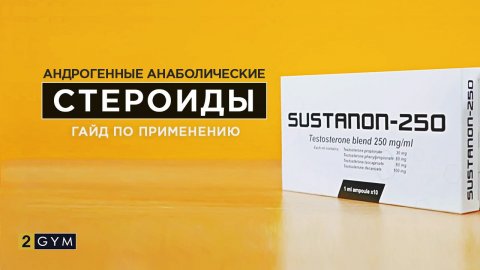












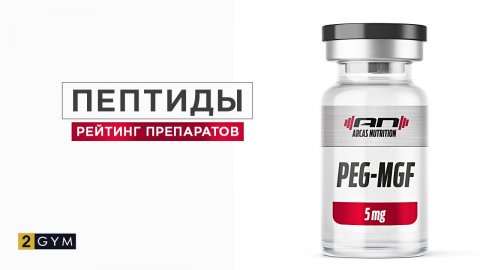

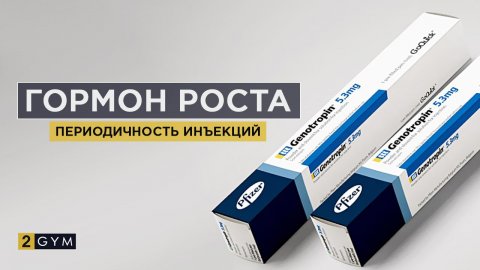
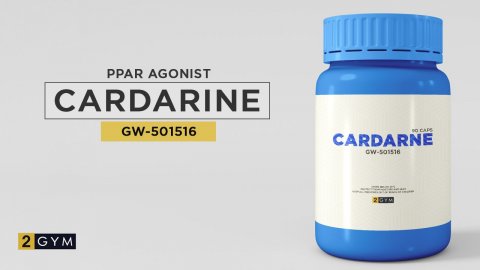
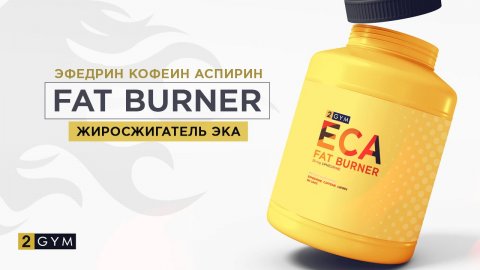
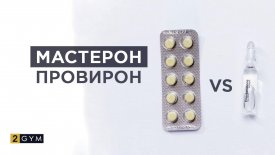
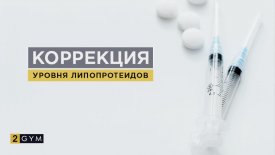

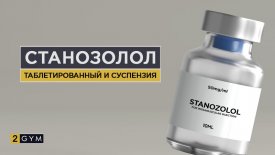








Log in with ( Sign Up ? )
or post as a guest
Be the first to comment.